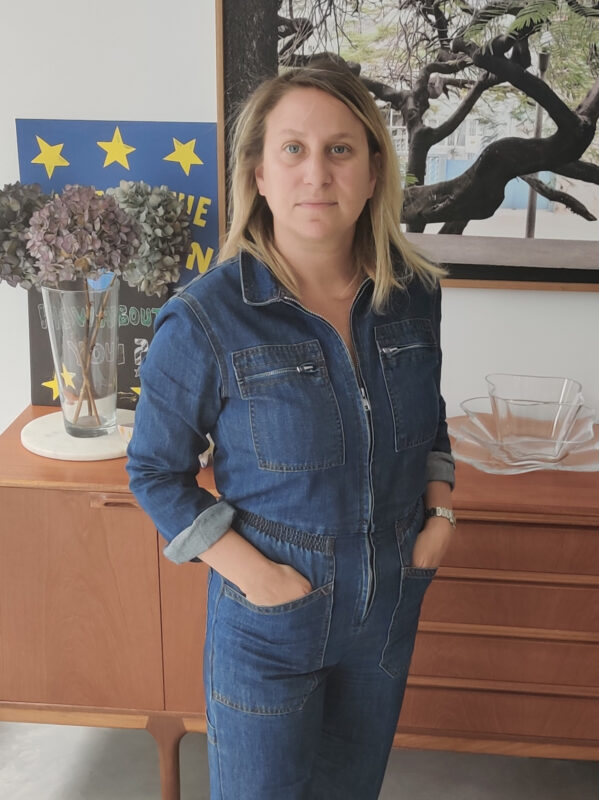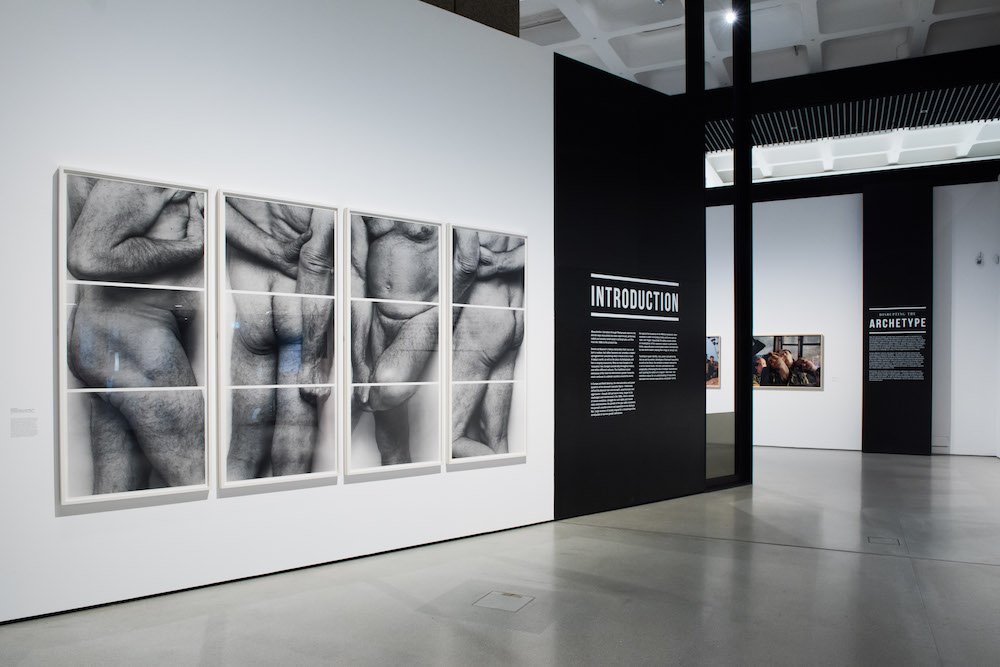What we’re reading #1: Summer 2024
Introducing What we’re reading, our new column where we set off on a literary journey to discover writing that intersects critical thinking and visual culture. Each instalment features a selection of recently published titles, articles and interviews from around the web and world of print, offering a spotlight onto a myriad of contemporary concerns. Kicking off the series, Editorial Intern Thomas King writes about Anne Carson’s thoughtful Paris Review interview, Fatos Üstek’s blueprint for new institutional horizons, Holly Connolly’s assessment of social media protest posting, and more.
Thomas King | Resource | 27 June 2024
‘What Is The Purpose of Protest Posting?’ | Holly Connolly for ArtReview, March 2024
Holly Connolly’s words for ArtReview carry urgency as she questions how we can give ‘the correct weight’ to images of genocide, in light of the ongoing bombardment of Gaza and ‘recurring condition of objectification’. The article underscores the paradox of social media activism, wherein the boundaries of “meaningful” political action are often blurred. Connolly cites recent images of stripped and blindfolded Palestinian men presided over by IDF soldiers, drawing a parallel with the infamous Abu Ghraib photographs taken by US soldiers in 2004. She goes on to condemn perpetrators who broadcast their atrocities committed upon others and notes that, even when they wield the camera, it lets the subject address a possible future viewer beyond the present horror, making us, the onlookers, accountable to them, and in turn witnesses, ‘part of a kind of citizenry of photography’ (what Ariella Aïsha Azouley refers to as ‘transit visas’). Ultimately, Connolly asks: ‘does an image reshared in opposition to its original intent perpetuate the initial violation of its subject?’. Connolly concludes by applauding the fastidious work of Forensic Architecture, whose crucial efforts to document the destruction of medical infrastructure in Gaza – through cross referencing hundreds of reports alongside photographs from numerous social media sites – prompt us to question our role as witnesses to genocide in a digital age.
‘Throwing Yourself Into the Dark: A Conversation with Anne Carson’ | Kate Dwyer for The Paris Review, April 2024
Kate Dwyer interviews Anne Carson, the erudite essayist and poet, on the release of Wrong Norma (2024), her first work in eight years. When asked about the book’s title, Carson refers to academic life as a constant balancing act on the brink of ‘wrongness’ and ponders how contradiction might serve to loosen the mind. Having translated numerous Greek tragedies, Carson describes how the translation process interacts within a space she likens to a ditch filled with floating possibilities. She cites Emily Dickinson’s works as a form of self-translation, with poems existing in their ‘untidy, unresolved entirety’ – those that confront the space, or nothingness, as John Cage would put it, between dialogue that Carson advocates. Her latest work – ‘a collection of disparate pieces, not a coherent thing with a throughline or themes or a way you have to read it’ – represents her newest self-translations that continue to explore the emptiness of a page and absence-as-presence. As for the creative process, Carson explains that sometimes, she chooses to simply focus on writing about the light in her apartment. This engrossment illustrates our willingness to halt time, to immerse ourselves in ‘total attention’, to be fully present and unaffected by its passage. The poet concludes the interview by lamenting that she only has fleeting minutes to experience this state of being, and so, while it may be some time before we receive another work, in the meantime, we can gain so much from what she articulates in this interview, or, as she would argue, what she doesn’t.
‘The Automation of General Intelligence’ | Matteo Pasquinelli for e-flux Journal, December 2023
In Issue 141 of e-flux, Matteo Pasquinelli expands on the release of his book, The Eye of The Master (2023), which probes into the intricate relationship between labour, automation and AI. Linking historical developments in labour theory and contemporary technological advancements, Pasquinelli argues that ‘technical artefacts reveal the form of the society that surrounds and runs them’. Pasquinelli meticulously traces how AI represents less a revolutionary departure from previous modes of automation but rather the culmination of a lengthy history of labour quantification, social hierarchy and technological evolution. He details the transition from the industrial division of labour to intricate systems like AI, revealing the role of cybernetics, psychology and economics in deciphering social dynamics. Advocating for a transformative political approach to reimagining AI, Pasquinelli underscores the imperative for collective action to challenge existing power structures and reimagine labour and social relations. He advocates for a culture of invention and design that prioritises community wellbeing over technological determinism, stating: ‘in confronting the epistemology of AI and its regime of knowledge extractivism, a different technical mentality, a collective “counter-intelligence”, has to be learned.’ Recognising that ‘the first step of techno-politics is not technological but political’, Pasquinelli urges us to challenge prevailing modes of thinking and empower communities to shape the future of technology in alignment with their values and interests, thereby inspiring a new vision for the role of politics in the AI era.
Fatoş Üstek, The Art Institution of Tomorrow: Reinventing the Model Lund Humphries, April 2024
The Art Institution of Tomorrow: Reinventing the Model (2024) by Fatoş Üstek is a manifesto advocating for the urgent transformation of art institutions in order to adapt according to contemporary social, economic and environmental changes. This book is part of Lund Humphries’ ‘Hot Topics in the Art World’ series and serves as a call to action for art institutions worldwide to break free from stagnation in favour of embracing a new model centred on artists and inclusivity. The current stagnation, Üstek argues, is exacerbated by financial constraints, underpaid staff and outdated operational frameworks, resulting in a lack of innovation and relevance. She writes that current art institutions lack ‘the resourcefulness to imagine new horizons’ and risk losing relevance unless they refocus on their core purposes and undergo significant structural and operational transformations. Declaring an institutional crisis that ‘manifests itself in stale and populist programming that lacks curatorial rigour and artistic nuance’, Üstek argues that this results in ‘a cultural offer for everyone that is about everything and nothing in particular’. In reinventing the model, she then lays out a two-pronged strategy to rejuvenate art institutions: focusing on an artist-centric model and implementing radical decentralisation. Firstly, she emphasises the importance of centring artists in all institutional activities, from commissioning to structuring budgets that comprehensively support the artistic process. Secondly, she argues for removing existing institutional hierarchies in favour of cross-disciplinary teams, aiming to foster commitment and engagement among staff and create a supportive environment conducive to superior creative output. While there are questions about the feasibility of creating such committed and decentralised teams, Üstek presents a blueprint for restructure that we must imagine is possible to foresee a new institutional horizon.
‘It’s Not What the World Needs Right Now’ | Andrew Norman Wilson for The Baffler, April 2024
Andrew Norman Wilson offers a raw, humorous and harrowing account of his life as a contemporary artist within an ‘echo chamber/conference room where overeducated try-hards compete to display the most perfect politics.’ Wilson writes to his resourcefulness and internal struggles as he competed (and competes) with a system often indifferent to individual plight. Despite exhibiting in prestigious biennials, financial stability eluded him as only a windfall from FedEx losing his sculpture allowed him to buy an old Volvo and travel West, seeking the role of an ‘LA Artist’. Fast forward a few years, Wilson precariously navigates life, staying in an Airbnb themed like a medieval castle, undergoing medical procedures at the shadowy Airport Endoscopy Center, while witnessing the Capitol riots under a Trump administration that deemed art as less ‘urgent’. Here, he begins to grapple with his artistic identity and the harsh realities of his career. His ‘success’ is imbued with chronic health issues, drug abuse, suicidal tendencies, financial instability and isolation (albeit punctuated by the companionship of his mother’s rabbit, Ziggles). Wilson reflects on his lifestyle, stating: ‘The maxim “money doesn’t buy happiness” starts to ring in my head. Not because I actually have money, but because I’m living with the material comforts of someone who does, and it doesn’t seem to make me feel any better.’ For Wilson, as for many outside society’s elite, the entrenched immobility within social hierarchies – an institutionalised issue perpetuated by the myth of meritocracy – fosters a profound sense of impostorism, felt intensely on the fringes of the art world. Describing the world as caught ‘between the demands of yacht owners and delusional incompetents with advanced deskilling degrees’, Wilson says he will defect and let others ‘get bullied’ into shallow pursuits and deceptive practices, as he avoids gallery openings and talks. In 2024, as Wilson gets closer to shooting a romantic thriller long in the pipeline, we can say that the art world does not need more governed voices. It has plenty of them. Instead, it needs the vulnerability of artists like Wilson, who expose the ‘cottage industry of critical art’ from within, not least through the voice of a defiant outsider.♦
—
Thomas King is Editorial Intern at 1000 Words and a student on BA (Hons) Culture, Criticism, Curation at Central Saint Martins, University of the Arts London.
Images:
1-London March for Palestine, 28 October 2023 © 1000 Words
2-Anne Carson © Peter Smith
3-Cover for Matteo Pasquinelli, The Eye of the Master: A Social History of Artificial Intelligence (Verso Books, 2023)
4-Cover for Fatoş Üstek, The Art Institution of Tomorrow: Reinventing the Model (Lund Humphries 2024)
5-Andrew Norman Wilson © Emily Berl
1000 Words favourites
• Renée Mussai on exhibitions as sites of dialogue, critique, and activism.
• Roxana Marcoci navigates curatorial practice in the digital age.
• Tanvi Mishra reviews Felipe Romero Beltrán’s Dialect.
• Discover London’s top five photography galleries.
• Tim Clark in conversation with Hayward Gallery’s Ralph Rugoff on Hiroshi Sugimoto.
• Academic rigour and essayistic freedom as told by Taous R. Dahmani.








